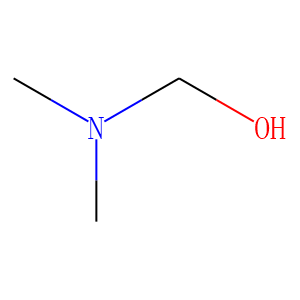| Reference | 1. Chemphyschem. 2016 Dec 5;17(23):3974-3984. doi: 10.1002/cphc.201600874. Epub 2016
Oct 12.
<br><br>
Density Functional Theory Analysis of Anthraquinone Derivative Hydrogenation over
Palladium Catalyst.
<br><br>
Yuan E(1), Wang L(1)(2), Zhang X(1)(2), Feng R(1), Wu C(1), Li G(1)(2).
<br><br>
Author information: <br>
(1)Key Laboratory for Green Chemica,l Technology of Ministry of Education, School
of Chemical Engineering and Technology, Tianjin University, Tianjin, 300072,
China.<br>
(2)Collaborative Innovation Center of Chemical Science and Engineering, Tianjin,
300072, China.
<br><br>
A density functional theory (DFT) analysis was conducted on the hydrogenation of
2-alkyl-anthraquinone (AQ), including 2-ethyl-9,10-anthraquinone (eAQ) and
2-ethyl-5,6,7,8-tetrahydro-9,10-anthraquinone (H4 eAQ), to the corresponding
anthrahydroquinone (AQH2 ) over a Pd6 H2 cluster. Hydrogenation of H4 eAQ is
suggested to be more favorable than that of eAQ owing to a higher adsorption
energy of the reactant (H4 eAQ), lower barrier of activation energy, and smaller
desorption energy of the target product
(2-ethyl-5,6,7,8-tetrahydro-9,10-anthrahydroquinone, H4 eAQH2 ). For the most
probable reaction routes, the energy barrier of the second hydrogenation step of
AQ is circa 8 kcal mol-1 higher than that of the first step. Electron transfer of
these processes were systematically investigated. Facile electron transfer from
Pd6 H2 cluster to AQ/AQH intermediate favors the hydrogenation of C=O. The
electron delocalization over the boundary aromatic ring of AQ/AQH intermediate
and the electron-withdrawing effect of C=O are responsible for the electron
transfer. In addition, a pathway of the electron transfer is proposed for the
adsorption and subsequent hydrogenation of AQ on the surface of Pd6 H2 cluster.
The electron transfers from the abstracted H atom (reactive H) to a neighbor Pd
atom (PdH ), and finally goes to the carbonyl group through the C4 atom of AQ
aromatic ring (C4 ).<br>
|

